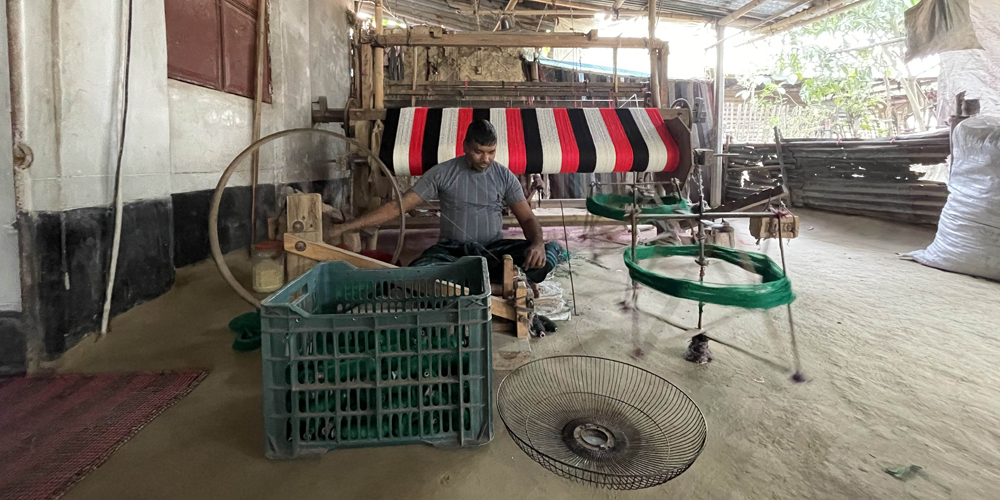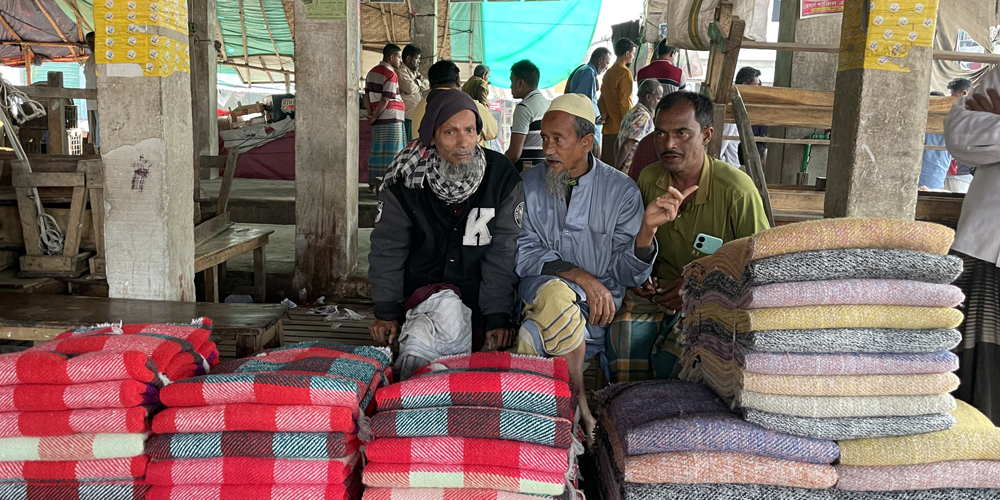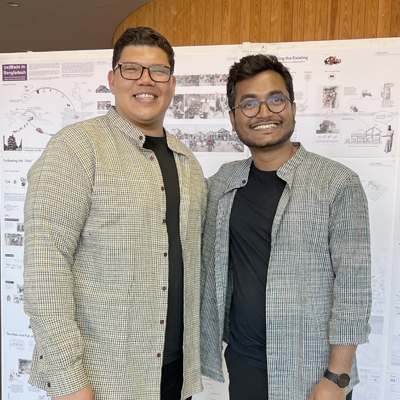KTH Field Studies students won a prize for the best thesis in their subject

An idea that started with a newly purchased shirt led master's students Sean Meyer and Shimanto Goswami to a field study on the recycling of textiles in Bangladesh connected to the global fast-fashion industry. After returning to Sweden, the KTH students received a prestigious prize for their degree project.
When Sean Meyer and Shimanto Goswani, both master's students in the Sustainable Urban Planning and Design programme at KTH, were approaching their final degree project for the spring semester of 2024, they were both considering doing projects in their respective home countries.
Sean Meyer had discovered the possibility of applying for a KTH Field Studies (FS) travel grant. When looking at a newly bought shirt and noticing a made-in-Bangladesh label from Shimanto Goswami's home country, an idea came to their minds: how about looking closer at the global garment and fast-fashion industry?
During the process of writing the project plan for the field studies application and looking at the research, Sean and Shimanto discovered a site that recycles fast fashion textile waste into recycled fabrics using traditional Bangladeshi handloom techniques. The site is unique because, in all of Bangladesh, less than 5 percent of the textile waste is recycled.
Field studies in Bangladesh
Sean Meyer and Shimanto Goswami were two of the first international students at KTH to be awarded the FS travel grant. The students started their journey in Dhaka, Bangladesh, where most of the textile industries in the country are situated. Sean and Shimanto visited the industries, looked at the working conditions, and went to the bazaar where recycled fabrics were sold. This led them to the main field study site, Shaoil Bazar, a small village in northern Bangladesh.
The whole village depends on textile recycling. Most households and the surrounding community are involved in textile recycling as their primary source of income. Shimanto and Sean talked to local weavers and different actors in the area to learn more about the textile industry.
"As urban designers and architects, we did not have any knowledge about the global textile industry before our studies. The field studies helped us in the sense that when you are onsite, it is easier to engage with different actors involved. The interviews and site visits helped us a lot to unpack the challenge. This industry is usually hidden behind closed doors, so getting access to some of the actors involved was important and unique.", Sean says.
"This study made us question ourselves since the site is a result of the global fast-fashion trend. We were wondering how we, as urban designers and architects, could help. Our two-month stay in Bangladesh helped us to unfold the global phenomenon and journey of textiles.", Shimanto says.
For Sean Meyer, it was helpful to go to Bangladesh with Shimanto Goswami, who knows the culture and language, which allowed him to gain more local experience, such as eating with the families and visiting different households, which were invaluable experiences.
"For me, the whole journey was what I enjoyed the most with the field studies. How we moved across Bangladesh, unpacking the industry, meeting with many different people, and also the leisure time and travelling together. The most exciting element was visiting the families and experiencing how open they are to foreigners and researchers. How they invite you into their house, show you their machines, jobs, and daily life - and they even go over the top to give you some tea and snacks. The trust they had in us was unique and exciting.", Sean says.
The gained information about the site, such as the actors and the infrastructure, made it possible for Sean Meyer and Shimanto Goswami to dig deeper into the subject to be able to make an urban design vision for the site and write their degree project with the title (re)Made in Bangladesh.

The Arwidssonstiftelsen Prize for best thesis in applied urban planning
Each year, KTH selects and ranks five of the best urban planning projects from a studio/course and sends them as nominations to Arwidssonstiftelsen. Other Swedish universities, such as Chalmers and Lund University, do the same.
Sean Meyer's and Shimanto Goswami's project was chosen as the best urban planning project in 2024 in competition with the best urban design projects all over Sweden, making the prize very prestigious.
"For me, this is a recognition of not only our work but also the work of the local actors we engaged with in Bangladesh, as well as KTH Field Studies, for allowing us to gain knowledge, bring it back, and disseminate the information through various platforms.", Sean says.
He continues:
"The first thing I do now when I buy new clothes is look at the label, so I am more conscious now about where the clothing items are coming from. I now purchase fewer clothes and try to fix my clothes rather than buy new ones."
"We have also inspired others when it comes to fast-fashion consumption. After a presentation I held about our project at the consultant company Sweco, they started a conversation about the textile industry and fast fashion in their office, and they have become more aware. Hearing things like that makes us very happy.", Shimanto says.
Recommends others to apply
To others considering applying to KTH Field studies, the message from Shimanto and Sean is clear: take the opportunity and do it!
"We have recommended it to other students. It is a wonderful way to ground your thesis work and to get to know a different country and culture. However, you need to be very strategic in how you navigate the fieldwork studies.", Sean says.
Shimanto adds that having an open mind as a field study student is important.

